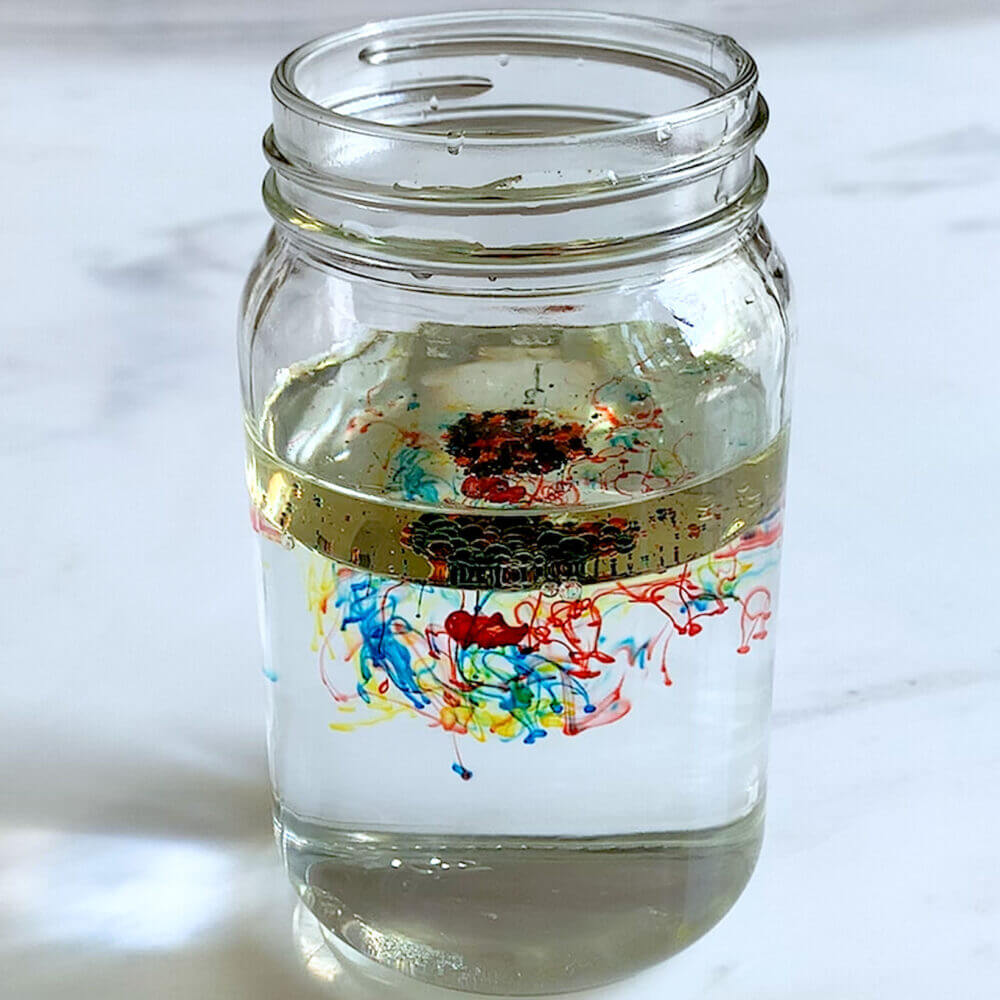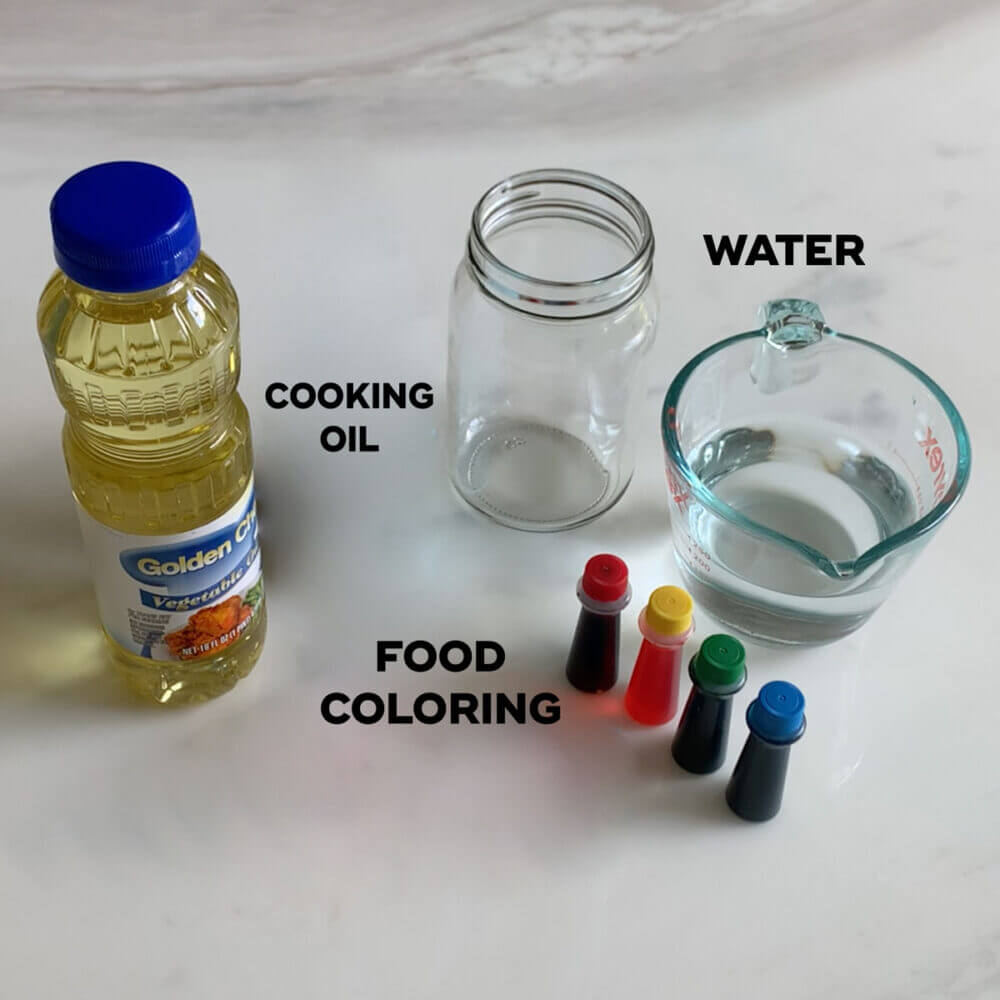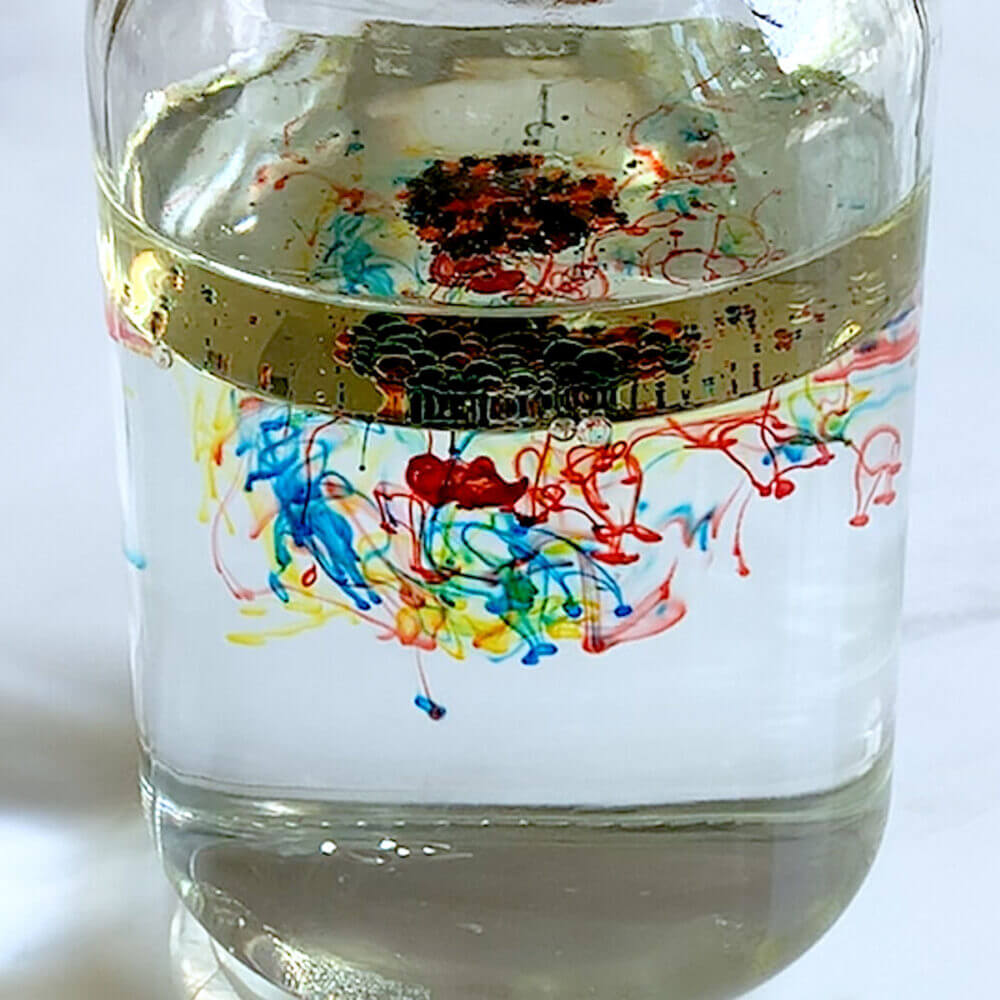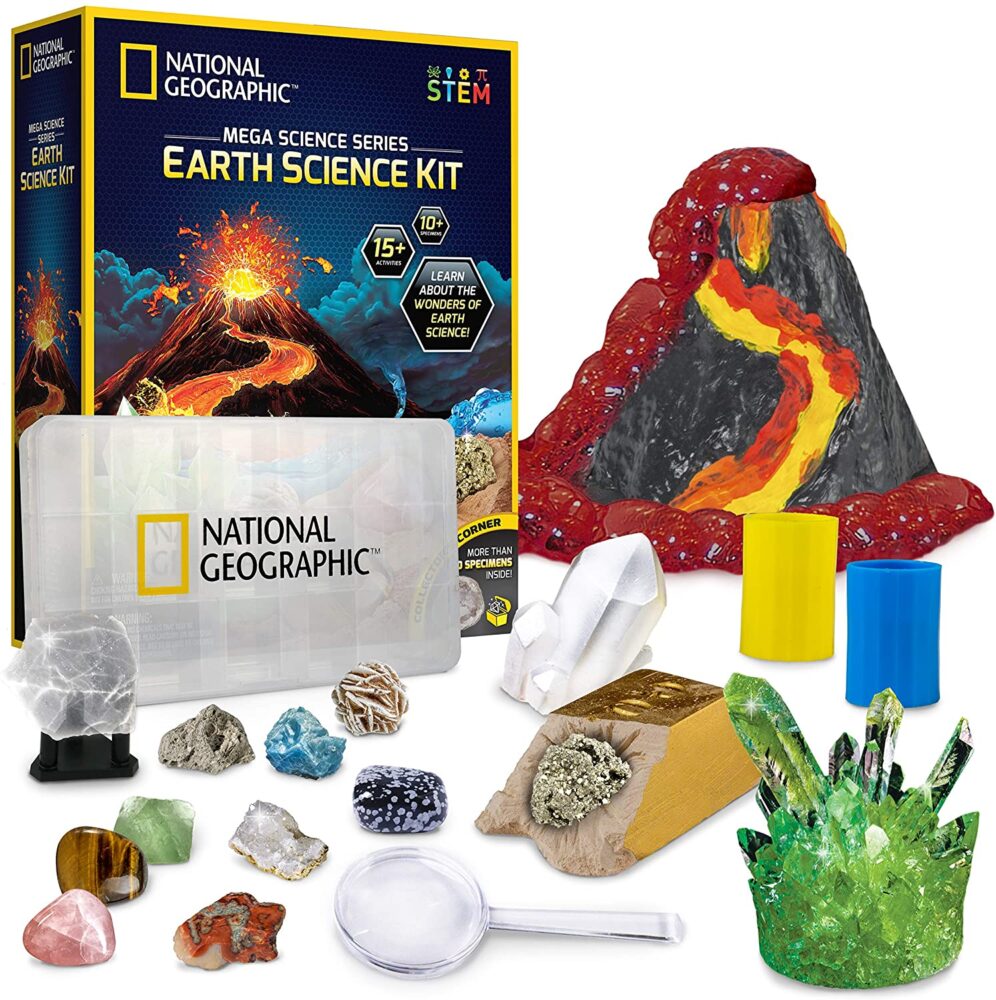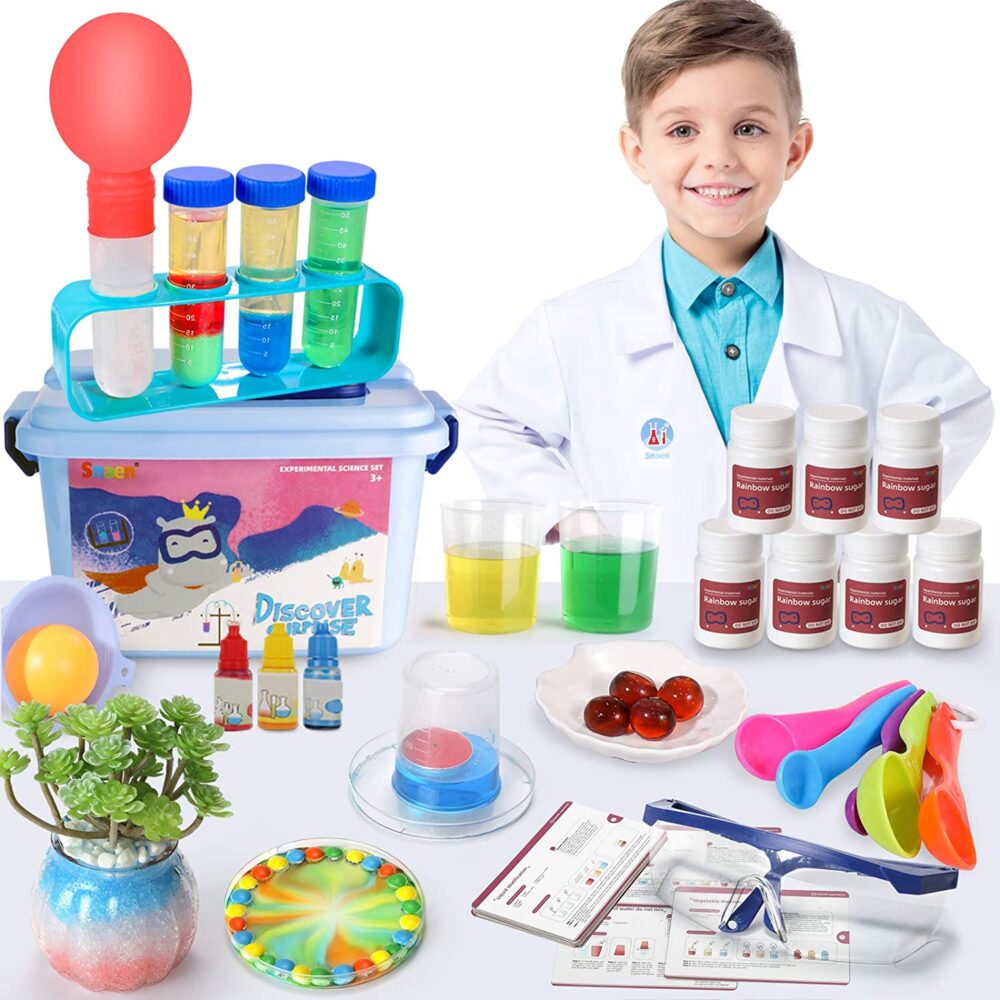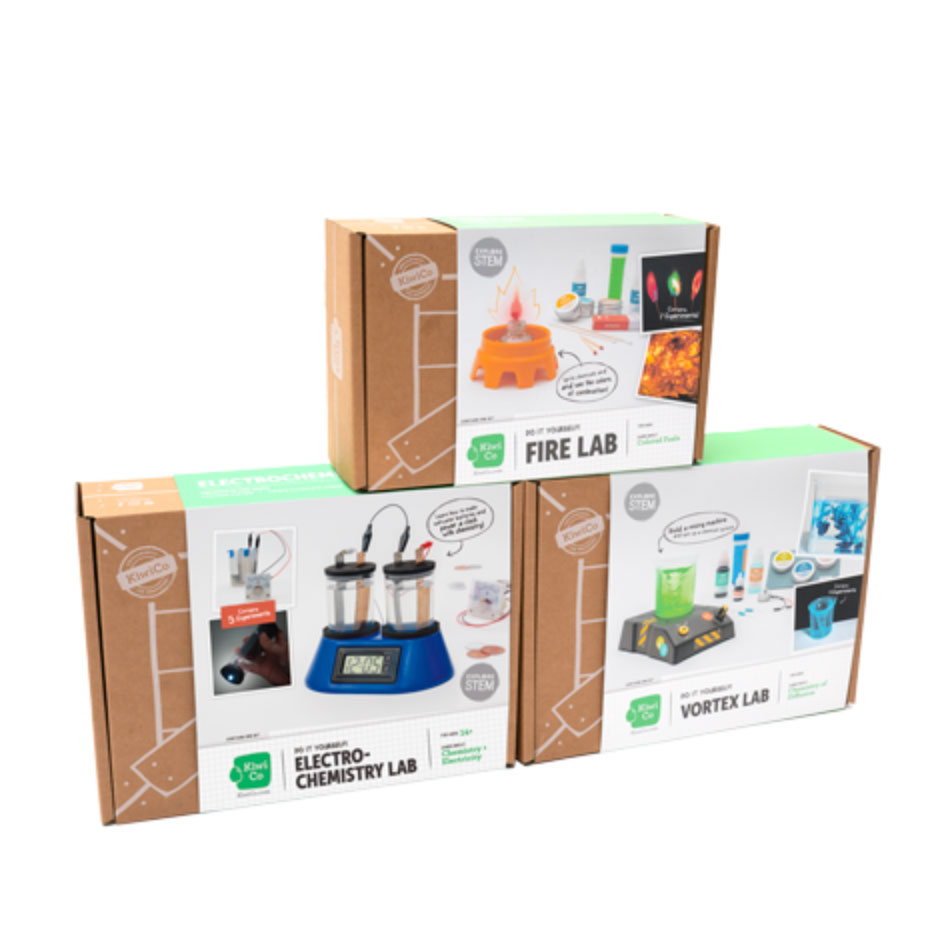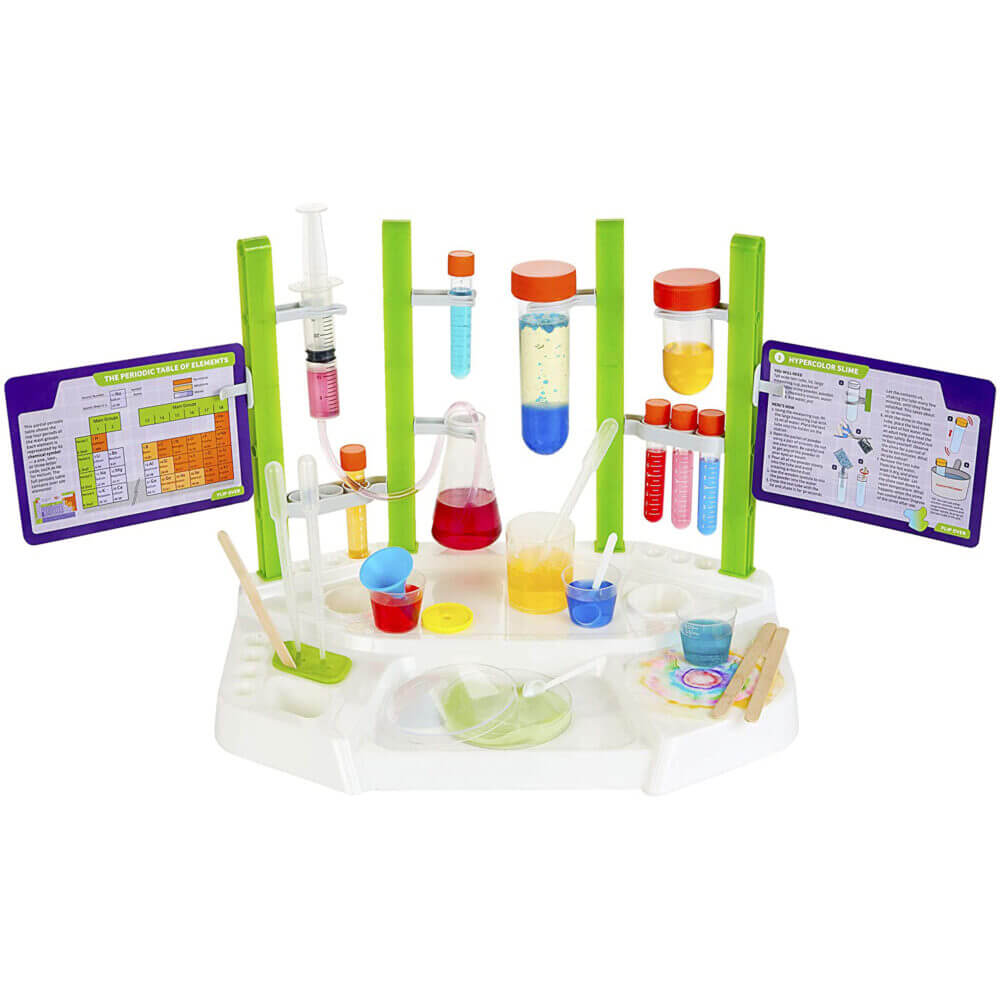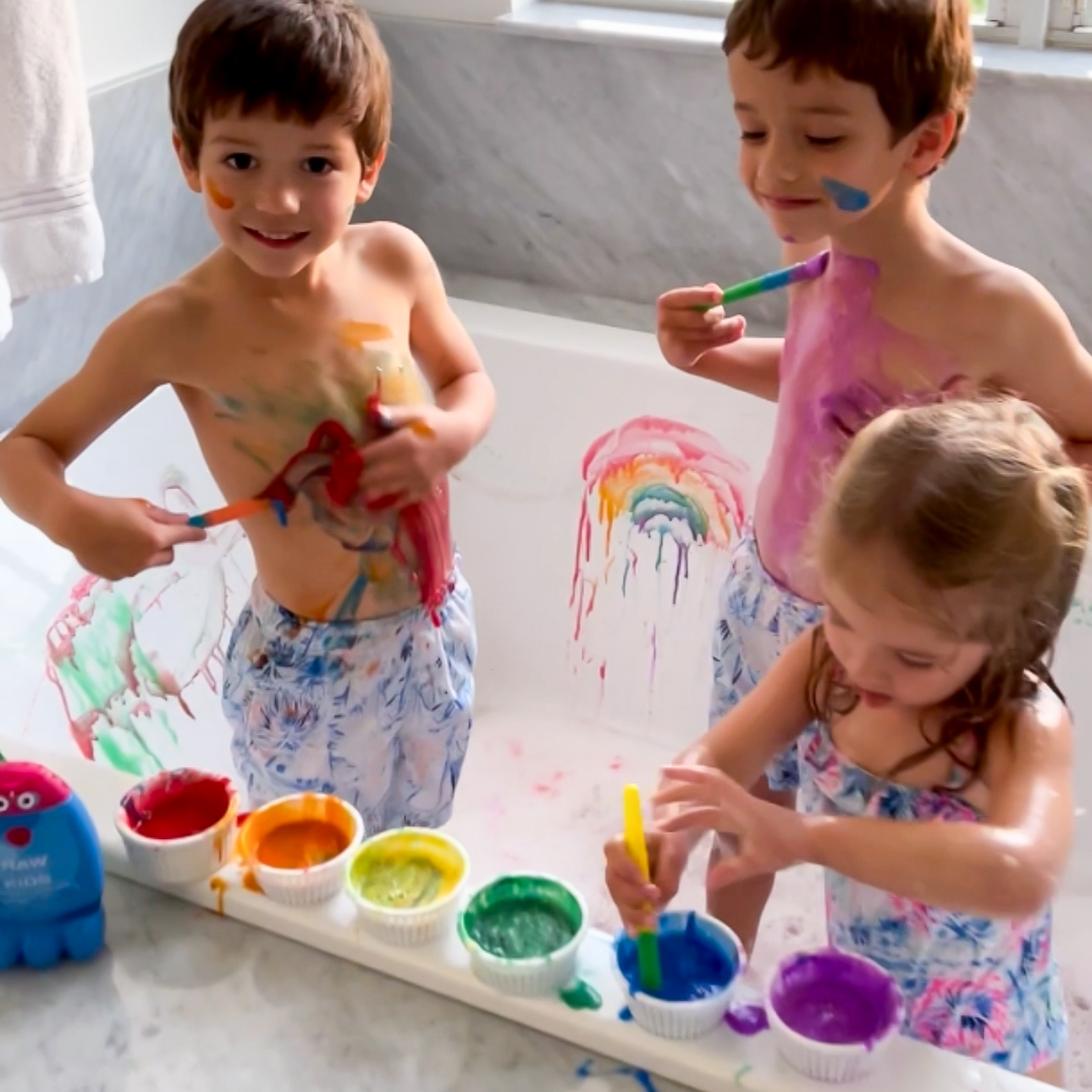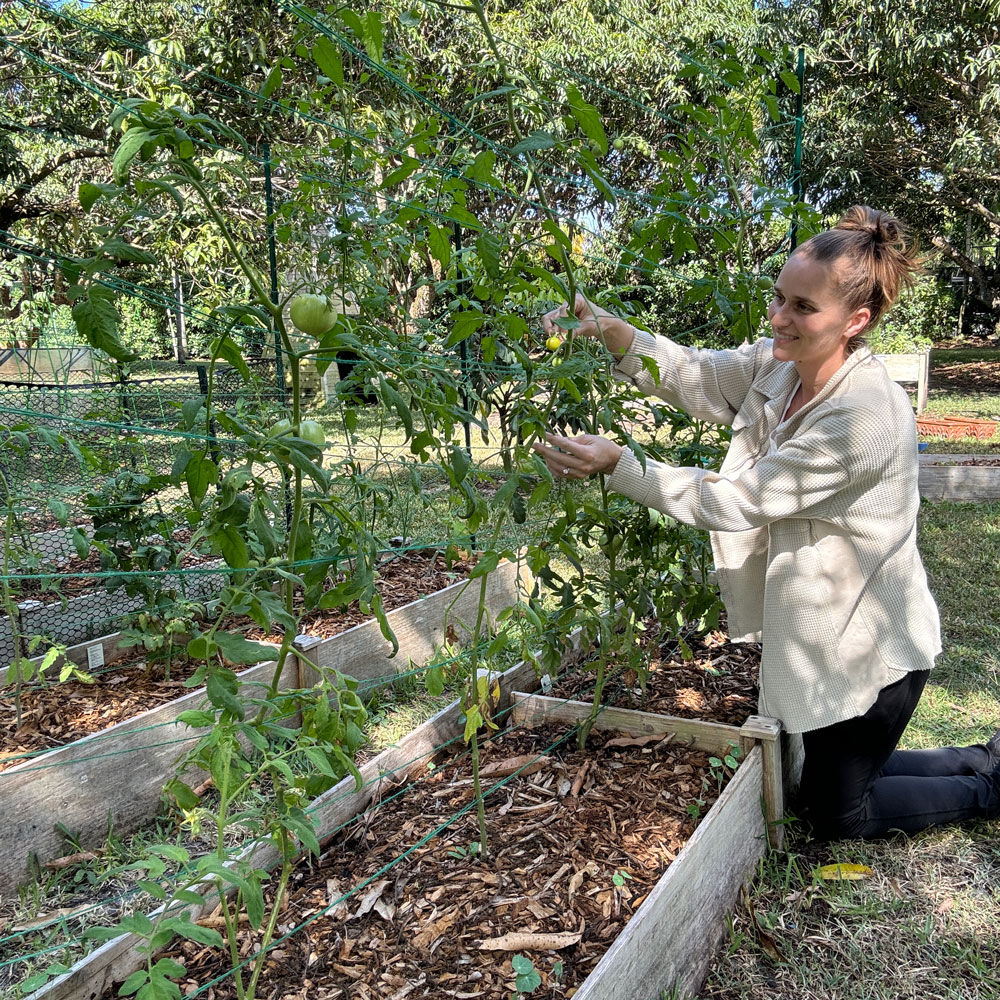Food Coloring Experiment – Fireworks in a Jar
This food coloring experiment is a fun way to visualize density! As the food coloring slowly sinks through the layer of oil and into the water, it gives a very cool fireworks effect that the kids will love! Best part for grown ups? You probably already have these 3 simple ingredients in your kitchen already!
Read on below for the step by step instructions to make this fun fireworks activity quickly at home, camp, or school!
This would be a super fun activity for Independence Day, New Year’s Eve or just a great way to have a hands-on science activity at home or beyond.
Food Coloring Experiment is a Perfect Visual for Several Scientific Concepts
This experiment is not only great because of the simplicity of materials, but it is such a clear way to visualize density, dissolving, and diffusion. More on each of those concepts below!
The Food Coloring Experment in Action
Here’s how you can make and observe scientific concepts with this Fireworks in a Jar activity. In this video, you’ll see how simple and easy this food coloring experiment can come together to create a truly magical activity.
Once your child has mastered this fireworks activity, they can wow their family and friends by showcasing off this fun experiment as well.
All activities should be supervised by an adult. As an Amazon Associate I earn from qualifying purchases. This post may contain affiliate links.
The Food Coloring Experment in Action
Here’s how you can make and observe scientific concepts with this Fireworks in a Jar activity. In this video, you’ll see how simple and easy this food coloring experiment can come together to create a truly magical activity.
Once your child has mastered this fireworks activity, they can wow their family and friends by showcasing off this fun experiment as well.
All activities should be supervised by an adult. As an Amazon Associate I earn from qualifying purchases. This post may contain affiliate links.
Tips for This Food Coloring Experiment
While this activity is super simple to do, there are a few important tips to make sure it works correctly!
Don’t over mix the food coloring. In the step by step instructions below you’ll see that you’ll have to break up the food coloring droplets. Don’t overdo it or else the “explosions” won’t be as vibrant!
Use water-based food coloring. When I tested this food coloring experiment with gel-based and natural food coloring, it didn’t work well. The food coloring sank very fast and immediately diffused into the water making the water brown/black.
Pour the oil and food coloring mixture slowly. Dumping the mixture into the water fast will result in the food coloring joining together, becoming too heavy, and possibly resulting in the food coloring sinking too fast and diffusing immediately without being able to see any of the “firework” effect. So if your little one has not mastered the skill of being “gentle,” it’s best for the grown up to demonstrate!
Materials
- Clear Container
- Water
- Clear Container
- Water
- Oil
- Food Coloring
Step-by-Step Instructions
Step 1
Fill a clear container with water about 3/4 the way full.
Step 2
Grab a small bowl and put in about three tablespoons of oil.
Step 3
Once you add the oil, put in anywhere from 4-8 drops of food coloring.
Step 4
Take a fork and slightly break up the beads food coloring – don’t overdo it!
Step 5
Slowly – very slowly! – pour the oil into the glass of water.
Step 6
Enjoy the fireworks! (And be ready to do it again!)
Step 1
Fill a clear container with water about 3/4 the way full.
Step 2
Grab a small bowl and put in about three tablespoons of oil.
Step 3
Once you add the oil, put in anywhere from 4-8 drops of food coloring.
Step 4
Take a fork and slightly break up the beads food coloring – don’t overdo it!
Step 5
Slowly – very slowly! – pour the oil into the glass of water.
Step 6
Enjoy the fireworks! (And be ready to do it again!)
Science Behind This Fireworks in a Jar Experiment
This science experiment is all about density, plus dissolving and diffusion! Here’s how you can explain each of these to your kiddo!
Denisty. Density is the mass of an object divided by it’s volume – but this might sound a bit complicated for your little one! More simply, density is how much space a substance or object takes up. Water is more dense than oil so it sits at the bottom of the glass, while the less-dense oil, floats above it. This is why oil and water do not mix – a fancy way to say this is that oil and water are immiscible.
Dissolve. Dissolving is when one substance breaks up when it comes into contact with another substance. Food coloring does not dissolve in oil, but it does dissolve in water. The fact that food coloring dissolves in water means they are miscible.
Diffusion. Diffusion refers to molecules moving from an area of high concentration to low concentration. You can experiment with the speed of diffusion based on the temperature of the water. Food coloring will diffuse faster in warm water, whereas it will diffuse slower in cold water. This is because the molecules move faster in higher temperatures.
For more fun science experiments, visit our comprehensive list!
Science Behind This Fireworks in a Jar Experiment
This science experiment is all about density, plus dissolving and diffusion! Here’s how you can explain each of these to your kiddo!
Denisty. Density is the mass of an object divided by it’s volume – but this might sound a bit complicated for your little one! More simply, density is how much space a substance or object takes up. Water is more dense than oil so it sits at the bottom of the glass, while the less-dense oil, floats above it. This is why oil and water do not mix – a fancy way to say this is that oil and water are immiscible.
Dissolve. Dissolving is when one substance breaks up when it comes into contact with another substance. Food coloring does not dissolve in oil, but it does dissolve in water. The fact that food coloring dissolves in water means they are miscible.
Diffusion. Diffusion refers to molecules moving from an area of high concentration to low concentration. You can experiment with the speed of diffusion based on the temperature of the water. Food coloring will diffuse faster in warm water, whereas it will diffuse slower in cold water. This is because the molecules move faster in higher temperatures.
For more fun science experiments, visit our comprehensive list!
More Science Experiments to Explore!
Here are my top picks for science experiment kits!
This kit lets your children learn hands-on about geology and chemical reactions in volcanoes.
This science kit for kids includes 30 scientific experiments plus fun gear like a lab coat, goggles, and other scientific equipment!
This 3-Pack Chemistry Kits will ignite a passion for science. Including an electrochemistry lab, fire lab, and vortex lab.
Create glowing slime, fizzing reactions, oozing bubbles, colorful chromatography, and more!
What’s Next?
How to Make Kids Bath Paint – Colorful Clean Fun
Explore a fun and easy way to make bath time fun for kids with our vibrant and homemade kids bath paint recipe!
The Best Bath Toys for Kids in 2024
Explore the best bath toys for kids! Discover the ultimate guide to bath time fun with these top picks that will make every splash memorable.
How to Layer a Raised Garden Bed and Make a Trellis
Learn how to layer a raised bed and create affordable trellises for thriving gardens. Explore our guide for expert tips & easy instructions!

